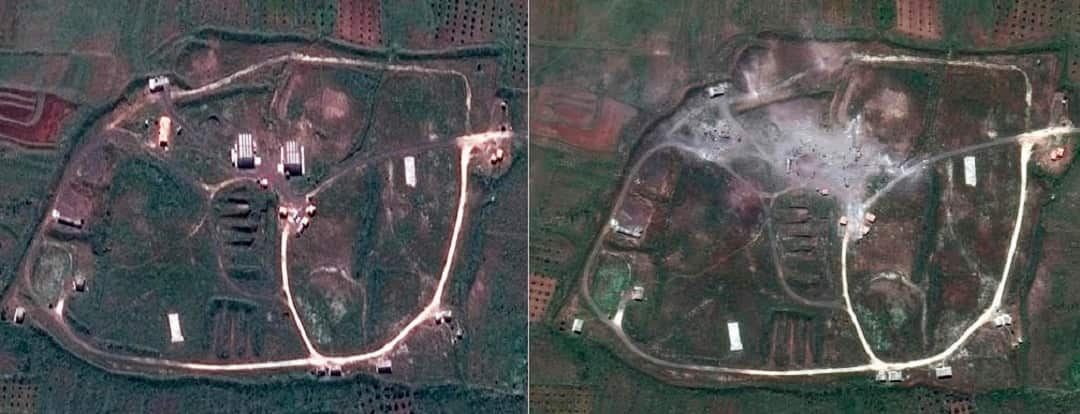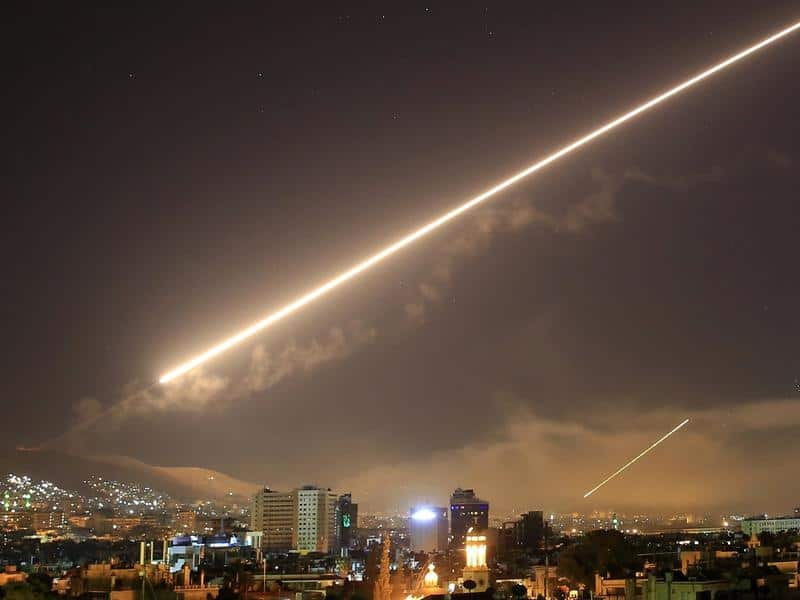Before and after satellite pictures have revealed the damage of Saturday's US, French and British strikes that were intended to punish Syria for an alleged chemical weapons attack.
Pictures from satellite imagery company DigitalGlobe show sites including the Barzah Research and Development Centre and the Him Shinshar Chemical Weapons Storage Facility have been reduced to rubble.
The images appear to counter Syrian claims that some targeted sites didn't receive any damage. The US and its allies fired more than 100 missiles at Syria on Saturday in what the Pentagon called a "one-time shot" after President Bashar al-Assad was reportedly responsible for a chemical weapons attack in Douma using at least chlorine gas.
The US and its allies fired more than 100 missiles at Syria on Saturday in what the Pentagon called a "one-time shot" after President Bashar al-Assad was reportedly responsible for a chemical weapons attack in Douma using at least chlorine gas.

The Him Shinshar Chemical Weapons Storage Facility in Syria on April 13 and April 14. Source: AAP
The Barzeh facility is thought to be the centre of Syria's chemical weapons program, while chairman of the US joint chiefs of staff, General Joseph Dunford, said Him Shinshar was "the primary location of Syrian sarin and precursor production equipment".
The pictures come as the Organisation for the Prohibition of Chemical Weapons (OPCW) opened emergency talks in The Hague on Monday about the suspected poison gas attack in Douma.
The OPCW has 192 members, and the governing executive council meeting of 41 states was called by its chairman, Bangladeshi ambassador Sheikh Mohammed Belal, "to discuss the alleged use of chemical weapons" in Syria. The French ambassador said priority must be given to boosting the work of the world's chemical arms watchdog so it can dismantle Syria's "secret" toxic weapons program.
The French ambassador said priority must be given to boosting the work of the world's chemical arms watchdog so it can dismantle Syria's "secret" toxic weapons program.

Missiles in the skies over Damascus. Source: AAP
"The priority today is to give the technical secretariat the means to complete the dismantling of the Syrian program," Phillipe Lalliot told emergency OPCW talks.
Following the recent attacks "we all know, Syria has maintained a secret chemical program since 2013," the ambassador added, referring to the year when Syria finally joined the OPCW and admitted to stockpiling toxic arms.
Additional reporting: Reuters, AFP
Share

